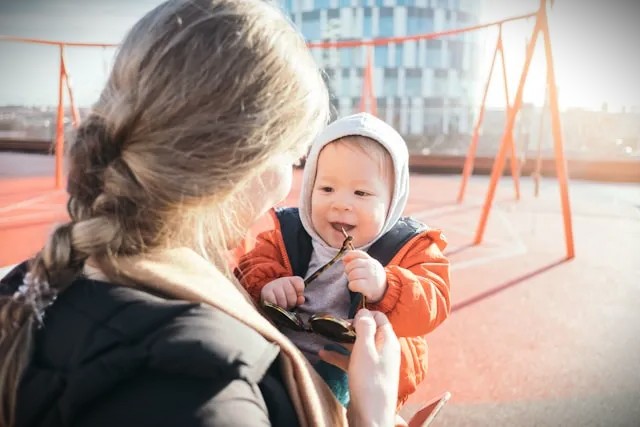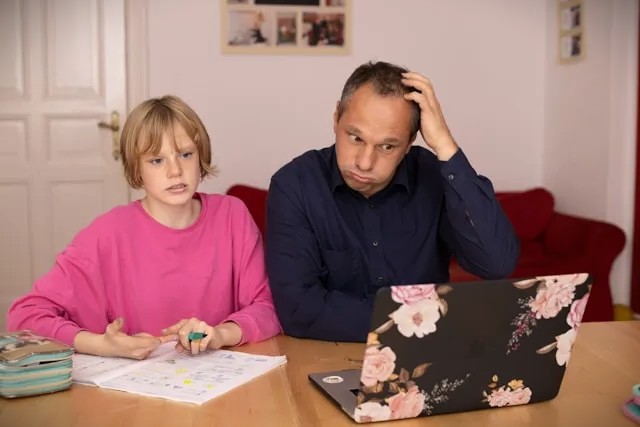Table of Contents
Baby’s language and emotional growth are two of the most important aspects of early childhood development. From their first coos and babbles to their first words and smiles, babies use both language and emotions to connect with the world around them. These skills are deeply intertwined: language allows babies to express feelings, while emotional support encourages them to communicate confidently.
During the first years of life, a baby’s brain grows rapidly, absorbing sounds, words, and emotional cues from caregivers. Parents play a key role in this journey—how you respond, talk, and interact directly shapes your child’s ability to communicate and manage emotions.
In this article, we’ll explore practical ways to nurture baby’s language and emotional growth, discuss milestones, and share expert tips to help your little one thrive.
Understanding Baby’s Language Development
A baby’s journey with language begins long before they say their first word. From the very first cry, babies are already communicating their needs and emotions. Over time, these sounds gradually transform into coos, babbles, and eventually meaningful words.
During the first year, baby’s language development follows key milestones. Around 2–3 months, infants start cooing and responding to familiar voices. By 6 months, babbling begins—“ba-ba” or “da-da” may sound random, but they are important building blocks of speech. Between 9–12 months, babies often understand simple words and may say their first recognizable word.
By age two, most children can combine simple words into short phrases, showing rapid growth in both communication and understanding. This progress is closely tied to the emotional bond they share with parents and caregivers. When a baby feels safe, loved, and encouraged, they are more confident to explore sounds, mimic words, and express themselves.
💡 Tip: Talk, sing, and read to your baby daily. The more they hear language, the more they learn to use it themselves.
– What It Means

Just as a baby learns to communicate with sounds and words, they also develop the ability to understand and express emotions. Emotional growth is the foundation of a child’s social and mental wellbeing. It begins with simple reactions—crying when hungry, smiling when comforted—and gradually develops into more complex feelings like joy, fear, or frustration.
In the first year, babies rely heavily on their caregivers to regulate emotions. A gentle hug, a soothing voice, or consistent attention helps them feel secure. This trust becomes the building block for healthy emotional development. As they grow, babies start to recognize familiar faces, show affection, and even mirror the emotions of those around them.
By toddlerhood, children begin learning self-expression—pointing, using words, or showing gestures to communicate how they feel. The way parents and caregivers respond during these moments shapes not only the baby’s emotional growth but also supports language development, since feelings are often expressed through words.
💡 Tip: Always respond warmly to your baby’s emotions—whether they’re smiling, crying, or babbling. Your response teaches them that their feelings and expressions matter.
The Connection Between Baby’s Language and Emotional Growth

Language and emotions grow side by side in a baby’s early years. When a baby feels secure and loved, they are more open to exploring sounds, copying words, and communicating freely. On the other hand, language gives babies the tools to express their emotions—whether it’s saying “mama,” pointing, or later using words like “happy” or “no.”
For example, a baby who hears soothing words during moments of distress learns that language is not just about sounds but also about comfort and trust. Similarly, when parents respond to babbling with smiles, eye contact, or words, it encourages both language development and emotional bonding.
Research shows that children who receive consistent emotional support often reach language milestones earlier. This is because they associate communication with safety, love, and connection. In short, baby’s language and emotional growth are inseparable—one strengthens the other.
💡 Tip: Narrate your daily routines to your baby—describe what you’re doing, how you feel, and what they might be experiencing. This strengthens both emotional understanding and vocabulary.
EXTRA- If you want to learn about The influence of mothers and fathers on child development, please visit this article.
How Parents Can Support Baby’s Language + Emotional Growth
Parents and caregivers play the most important role in shaping both a baby’s language and emotional growth. The everyday interactions you share—talking, smiling, reading, or simply responding—become powerful learning experiences for your child.
Here are some simple but effective ways to support both areas of development:
Talk, Read, and Sing Daily
- Speak to your baby in a gentle, clear voice.
- Read colorful storybooks to build vocabulary.
- Singing helps babies connect rhythm, tone, and emotions with language.
Respond to Cues with Warmth
- When your baby coos or babbles, respond as if having a real conversation.
- Smile, make eye contact, and use expressive gestures—this builds emotional trust and encourages language use.
Create a Safe and Loving Environment
- Babies learn best when they feel secure.
- A calm, nurturing space helps them focus on exploring sounds and emotions without fear.
Everyday Activities That Boost Both Skills
- Play peek-a-boo to teach turn-taking in communication.
- Point to objects and name them while grocery shopping or walking outside.
- Describe your feelings (“I’m happy you’re smiling”) to help babies link words with emotions.
💡 Tip: Consistency matters. Even small daily routines like bedtime reading or mealtime conversations make a huge difference in supporting both baby’s language and emotional growth.
Common Challenges Parents Face

Even with love and care, some babies may show differences in how quickly they develop communication and emotional skills. It’s important for parents to remember that every child grows at their own pace, but understanding common challenges can help ease worries.
Delayed Talking or Limited Words
Some babies may take longer to say their first words or build a vocabulary. While this can be normal, lack of progress after 18–24 months may signal the need for extra support.
Difficulty in Expressing Emotions
Babies may struggle with emotional regulation—crying often, showing frustration, or finding it hard to self-soothe. This can affect their willingness to interact and communicate.
Bonding Difficulties
In some cases, babies may seem less responsive to smiles, voices, or touch. This can make it harder for parents to connect emotionally and encourage language development.
Environmental Factors
Limited interaction, excessive screen time, or lack of consistent routines can slow both baby’s language and emotional growth. Babies need real human engagement to thrive.
💡 When to seek help: If your baby isn’t babbling by 12 months, doesn’t use simple words by 18 months, or shows little interest in connecting emotionally, it’s best to consult a pediatrician or child development specialist.
Expert Tips for Encouraging Growth

Supporting a baby’s language and emotional growth doesn’t require special tools—just consistent love, attention, and simple daily habits. Experts emphasize that early interactions have a lasting impact on brain development and future learning.
Be Consistent in Communication
- Talk to your baby often, even during everyday tasks like feeding or dressing.
- Use simple, clear words and repeat them to reinforce understanding.
Encourage Emotional Expression
- Label emotions out loud: “You’re smiling—you’re happy!” or “I see you’re upset.”
- This helps babies connect feelings with words, supporting both emotional and language growth.
Limit Screen Time
- Real-life conversations, gestures, and play are far more powerful than screens.
- Pediatricians recommend little to no screen exposure for children under two years.
Build Secure Attachments Through Routines
- Daily routines like bedtime songs, cuddles, and meal conversations build stability.
- A secure environment boosts confidence, making babies more eager to explore language.
Engage in Play-Based Learning
- Play peek-a-boo, stacking blocks, or naming toys together.
- Play strengthens memory, social bonds, and vocabulary.
💡 Remember: What matters most is not perfection, but presence. Babies thrive when parents are responsive, patient, and emotionally available.
you can read more about Baby’s language + Emotional growth by visiting this article
Conclusion & Call-to-Action
From the very first cry to the first “mama” or “dada,” every moment is part of a baby’s language and emotional growth. These two areas are deeply connected—language helps babies express their feelings, while emotional support gives them the confidence to communicate. Together, they form the foundation for social skills, learning, and future relationships.
As a parent or caregiver, your daily interactions matter more than you may realize. Reading a bedtime story, responding to a giggle, or simply talking during everyday tasks can spark powerful growth in both language and emotions.
👉 Start today—sing a short song, narrate your actions, or share a warm smile with your little one. Every word and every expression you exchange is shaping their future.






